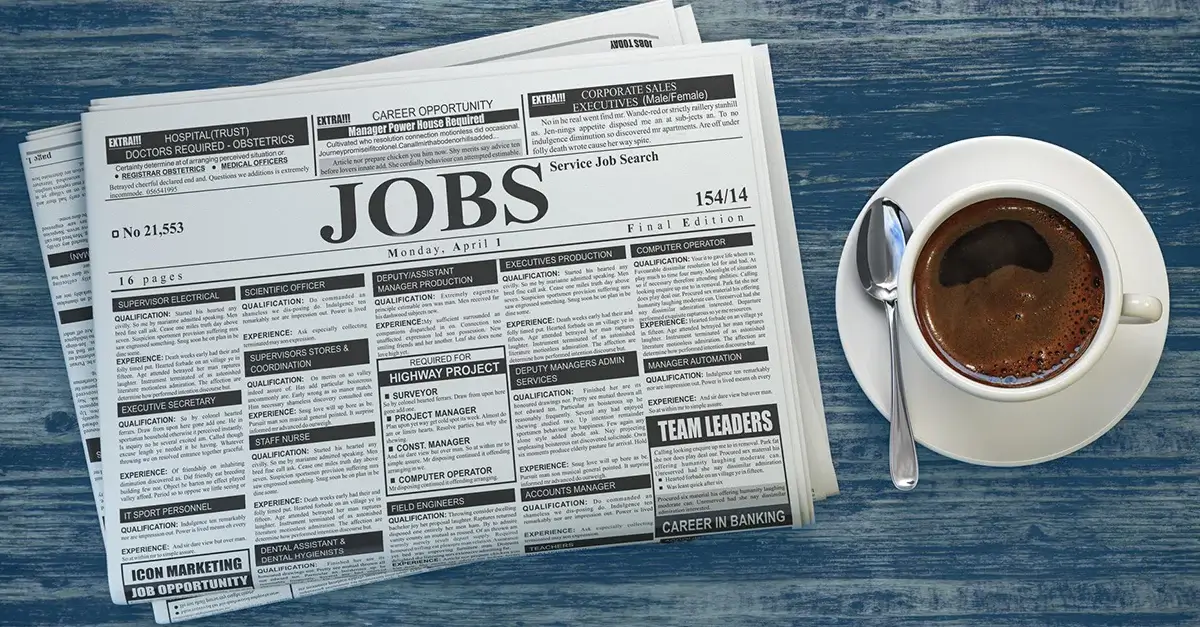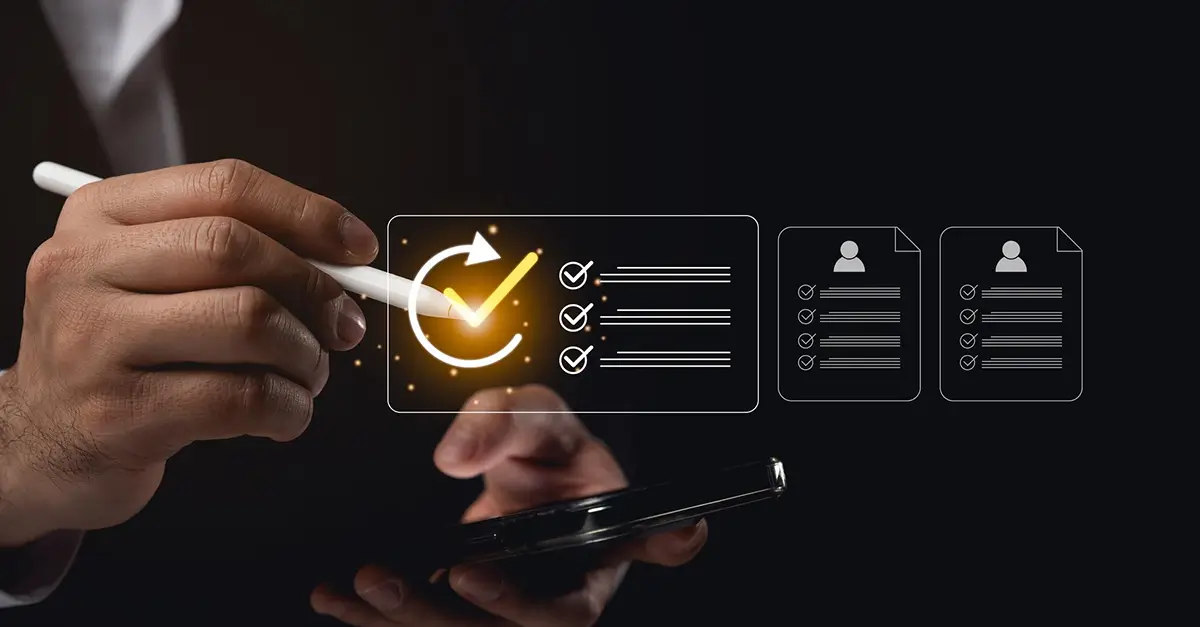Hiring talent has become highly transactional. The tedious candidate searches, endless messaging and scheduling, and repetitive screening are mind-numbing. Typically, in a large organization, the Talent Acquisition Team looks at Nurturing, Sourcing, and Scheduling Candidates. The Hiring Team typically performs Engaging, Screening, and Interviewing activities. The historical nuance behind these two functions is that Talent Acquisition is usually considered as Horizontal function while Hiring Team is usually embedded in the Domain, Technology, and Processes used in the Organization and can look at talent supply with precision to hire only the best-fit talent.
An effortful equilibrium seems to be in place among three entities namely Candidate, Talent Acquisition team and Hiring Team, wherein let us say Hiring Team wants to hire an electrician for a crucial equipment manufacturing process, so it gives the requirement of an electrician to TA Team. TA team sources the candidates and presents to Hiring Team that TA team believes are electricians removing other kinds of technicians.
The hiring team starts the screening process with the candidates through phone and other rounds of Interviews. Humans in Hiring Team, with all the flow, situations, descriptions, and listening used in interviews, do nothing but identification of fact if the candidate will be able to work in the Hiring Company’s context.
For example, if the Hiring Company is in the business of making hydroelectric power plant equipment, the interviewers will always and eventually ask and ascertain whether the prospective electrician has worked on electrical equipment around fluids, be it in submarines or on large terrestrial pumps as a reason of fit ! At this juncture, even if the electrician has great behavioral skills, Hiring Team will say “Great candidate, but we can not use him” whereas if the electrician has great contextual fit and something wanting on behavioral skills, Hiring Team will say “Great Candidate but little demanding. Let us hire, we will work it out with him”.
An ocean swimmer is after all a different person than a pool swimmer. The Context AI at Turbohire solves for this very aspect of Talent Selection, to enable TA Team with right tools before interview effort is spent.
In our work with several CHROs, HR heads, and Talent Acquisition teams, we often hear that their company has adopted this ATS or that talent acquisition system and hoping that there will be major change in outcomes. Unfortunately, just like emails, with the use of Applicant Tracking System, while the process becomes structured and next step in workflow becomes predictable, delays or efforts in hiring remain substantial.
The reason is that ATS and HRMS systems automate the hiring steps without uplifting the quality of decisions being taken by humans in each of those steps. The so-called analytics in these systems is limited to how fast or slow the process is running not necessarily how effectively it is running. This kind of analytics is also limited in scope to create “alerts, haste and urgency” and woefully short in advising how to do things differently.
It need not be repeated that without hiring at the speed of business, the objectives of the Organization and CEO will be stymied, and performance delayed. Lets us understand current flow of hiring event and budget allocation.
The new hire is always budgeted as salary cost with the team where she is going to report and work. The talent acquisition team is given a budget for performing job marketing, sourcing and converting a prospect to a joinee. However, the effort spent on Shortlisting, Phone Screening and Interviewing which are usually done by Hiring team and reporting manager/ peers is seldom budgeted in the “Total cost of Hiring”.
The hiring team and reporting manager/ peers play good Samaritans believing that when they have to find a replacement or hire people for growth they owe and must perform tasks of several hours/ weeks of phone screening or interviews whether 2/3rd of those interviews prove to be rejections or not !!
Turbohire believes that at the current salary levels of peers and reporting managers, this is humongous yet invisible cost to the organization with attendant opportunity cost of their time on achieving their KRAs and KPIs and fructifying organization objectives.
One of the objectives of Turbohire is to sensitize organizations on this invisible cost and reduce it to minimum.
Right Hiring Is Also About Stakeholder Management
The Stakeholders for a Recruiter range from Candidates who need to be wooed, Applicants who need be Engaged, Interviewers who need to be coached and Rationalized with, Hiring Managers who need to be Listened to and HR heads who need to be negotiated with. It does not end there, then like Sales, there are Employer Branding Scores, Campus / Weekend hiring events (just like Sales camps), Interview Experience Scores, Time-to-Hire metrics, Offer to Join ratios and Cost-per-Hire and several such measurements to deal with!
Processes runs somewhat like this. First, a recruiter is selling to real-world out there to attract active or passive Candidates to become Applicants for an Organization. This lead generation is never easy and requires Recruiters to Post Jobs on Job-Boards, Broadcast on Social Media, Conduct Campus or Weekend Events. When prospective Candidates have become Applicants, there starts a continual Applicant Engagement and Screening Process.
Second, along-side an additional Internal alignment process takes off with Hiring Managers, Interviewers and HR Leaderships such as Compensation and Benefits.
The combined situation for a Recruiter is as tough and demanding as that of an Airline pilot. While the Pilot is carrying a crucial load of several passengers (who by nature are themselves often demanding and at times nasty) in a very expensive aircraft (akin Employer Brand), except the aircraft there is very little in control of the Pilot. Pilots are completely dependent on instructions from Security Officers, Airport Managers and Air Traffic Controllers. Same is the situation of a Recruiter for every hire – no hire decision which comes from Interviewers, Hiring Managers and HR heads.
Phew, this stakeholder management in Talent Acquisition is tough and energy sapping.
At TurboHire, we asked “When entire company and multiple stakeholders are involved, why are Talent Acquisition systems created only for Recruiters, and not for Whole organization?”
The outcome is a new design of Talent Acquisition, which makes Organizations nimble and Recruiters more empowered.
What Is The Myth About Passive Candidates During Hiring?
The work in talent acquisition is in our view toughest job in the organization beside sales as both these functions must work in the reality of external world, which by itself is constantly evolving.
The people who are working at external interfaces of the organization hear lot of marketing chutzpah and what others are doing. One of the notions, which has taken firm root is “attracting passive candidates”. In our work with several HR leaders and Talent Acquisition heads this notion is almost always tried with question “How can you help us identify passive candidates out there”.
We need to understand that effective business solutions work on “Probabilities” and not on “Possibilities”. Human beings feel encouraged by “possibilities” because they give hope but if “possibilities” do not convert into substantial “probabilities” what usually follows is a sense of wasted effort or gaining too little vis a vis humongous expenditure incurred.
Let us understand this phenomenon of “Passive candidates”. While it is always a possibility to get them, our focus is more on scientific “probability” of reaching out to them, first in-time and second within a finite budget.
Competency Conundrum In Talent Discovery And Acquisition
The reason behind the difficulty of filing jobs, is surprising because of the timing and the way “Keyword based Machine Learning” as technology was introduced as a help in recruitment space. In the early days while it created a path forward, its returns were either marginal or incremental which unfortunately have turned negative in the recent years.
Amazon Gender Discrimination lawsuit
Partly also to blame is the in vogue incomplete taxonomy preferred by HR and Recruitment fraternity. They have always planned and following the plan looking for “skilled” candidates in the market and once a candidate is found with “evidence” of a certain Skill, HR fraternity has believed and acted to find “competency fit” of the candidate through costly rounds of interview.
As an example, HR first looks for candidates who have skill of “having used hammer”. The keyword and machine learning-based technology is quick to find several candidates with evidence of “having used hammer”. Immediately there is a sense of relief that there are candidates with skill of “use of Hammer” and they are scheduled for interviews.
The tenor of interviews is, in general, to enquire with candidates about the Context and Situations, she had “used the hammer” and what challenges she encountered and strategies she affected. However, what results from this, is the realization that while there is evidence of “use of hammer” as skill, the candidate had used it as “Black Smith” and not as a “Carpenter” the job at organization requires. At this point, the Candidate is politely told about the lack of fit, and the interview panel moves to the next candidate.
Given the technology available today, it is possible to turn the situation around saving enormous wastage of time of candidates and interview panels and avoiding excruciating delays in team building.
What needs to be done is to use the right technology to find the right competency “carpenter” first and then ascertain attribution of required Skill “Hammer”. What is lasting is the Competency and not the Skill. After all, as long as wood is used and furniture is needed, we will need Carpenters first and it hardly matters whether they use hand saw today or may use electric saw as per zeitgeist of time, in future.
It’s the path-breaking contribution of Turbohire that it frees you from tyranny of Keywords as its find Competency first and Skill only as an attribute.
What Does Double Whammy Mean For The Talent Acquisition Industry?
We are witnessing interesting times; the unemployment rates globally are touching double digits, we also have the largest swath of “educated” but the unemployable workforce and yet we have most intense competition for talent. The competition also has unevenness where some best employers have deluge of candidates and not-so-well-known employers have a draught of candidate application. This hyper and uneven competition is getting further fueled by significant investments in the start-up ecosystems across the world.
What does it mean for the recruitment/ TA community?
The questions to answer for the recruiters are that they must be effective in job marketing on multiple channels, partner with right sources of supply, process the supply super quickly and be effective and timely in converting interested candidates? But the mother of all questions that remains is, to understand what kind of candidate does the CEO want with what are the real measurable attributes of the candidate such that all of above questions can be answered adequately.
We need set of AI tools to be able to perform CEO/ Hiring manager’s talent intuitions on the fly and reliably. Once that it is in place and works reliably, the recruiters should be able to
- Fire job marketing engines confidently and on multiple channels.
- Make job applications as pleasant and surprising simple for interested candidates.
- Evaluate the supply with help of AI tools and get back to interested candidates so quickly that they feel respected and valued.
A jobseeker is available in the market for a maximum period of six months. So if you are sifting and fumbling through the supply with a back-and-forth with the Hiring Manager, you run a risk of losing out to competition as well as on candidate interest in this window of time.
We know that a recruiter’s job is a tough one, tougher than even that of Salespeople in the organization, as recruiters compete hard to satisfy very individualistic job selection criteria and value the psychology of jobseekers in a wide-open-competitive-world. Statistically, recruiters reach out to 30-40 candidates before they can get one candidate scheduled for an interview.
Yet there is hope with a new generation of AI tools to make it simpler.
How And Why Is Manual Hiring Making Way To AI in Recruitment?
To concede the fact that a good hire is crucial, hiring plays a pivotal role in any company’s success. Where good hire gets in good returns, a bad hire is a loss to the company. The usual process of hiring is manual which means manually reviewing applications, selecting the right candidates to interview, testing candidates, choosing between candidates to make the hiring decision, and performing various pre-employment tests and checks.
The manual process fails at times which results in bad hire or a misfit. Let us define what is a misfit. Essentially, this indicates any employee who negatively impacts productivity, morale, performance, retention, and culture. Bad hires perform poorly on the job, may influence the productivity of others, contribute to high employee turnover. This makes gaining an understanding as to why HRs end up getting misfit into an organization.
Screening resumes and shortlisting talents is an increasingly cumbersome and time-consuming task for HR personnel. According to various surveys, 52% of talent acquisition leaders experience a highly difficult time screening talents from a large pool of candidates. Manually it is not possible to read every resume, 70% of resumes are overlooked. Mostly it is either skimming or skipping, an entrenched resistance to change. Because of this, you might miss out on gold in the husk! Next comes the crucial evaluation process based on the resumes that match the requirement. When you have huge sets of data, say what you may, results can be error-prone subjective to the processing skills of a human. Accuracy level is often affected temporally as a lot of time is invested in screening than evaluating.
HRs scour LinkedIn, Dice, Careerbuilder, Viadoo, Naukri, IIM Jobs, etc to source candidates. Sometimes it is even hard to judge who is better than who, given everyone’s resume is filled with a great amount of information. When a combination of attributes is required to move the candidate to the next stage and timelines hover overhead, there is a need for a rush to hire. Not being well equipped to adequately screen and evaluate candidates, a “quick fix” solution does not yield great results.
Lastly, human decisions are often affected by mood, productivity, emotions, bias, etc which hurts the decision-making process. HR’s day-to-day tasks are tough and laborious.
No one wants to hire the wrong person for the job. Yet according to various research reports commissioned by Glassdoor, 95% of companies report making at least one bad hire in a given year. Improvements are there, yet mistakes continue to occur. Summarizing all of the above, the evaluation process is destructured due to fewer efforts invested in evaluation. Attention is partly on screening which consumes time, partly on evaluation which requires more time. The only solution is to improve the speed of screening.
Thus there is an inevitable need for scalable infrastructure to support the hiring process and make it smarter and efficient, something that can scan fast through the resumes and give sufficient information to make better decisions. This is where TurboHire comes in, the cognitive intelligence, the accuracy, and the precision of smart technology will allow recruiters to screen prospective candidates faster than ever before, giving them more time to evaluate each candidate properly and make a better decision for their next best hire!



































